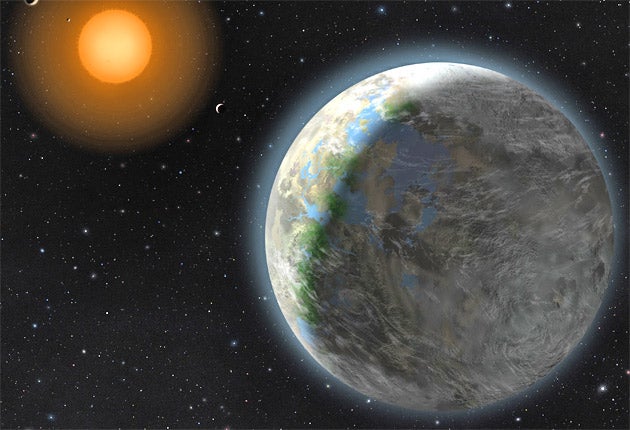Life could exist 'much further from the sun' than previously thought, scientists say
Research carried out in Scotland could redefine the so-called ‘Goldilocks’ zone of habitable planets and moons

Planets and moons could support life at distances from their star far greater than previously thought, according to research carried out in Scotland.
Scientists said the traditional “Goldilocks” model of planets which could sustain life – ones that are not too hot and not too cold – does not take into account the fact that liquid water can exist deep below the surface.
The team from the University of Aberdeen, working with academics from the University of St Andrews, conducted computer modelling which suggested the habitable zone for an Earth-sized planet could be as much as 14 times wider than previously thought.
They concluded that it must include “many more planets”, and said it could even mean ours is actually unusual for having its life predominantly on the surface.
The research paper was published in the journal Planetary and Space Science. According to BBC News, lead author and PhD student Sean McMahon explained the team’s findings: “The deepest known life on Earth is 5.3km below the surface, but there may well be life even 10km deep in places on Earth that haven't yet been drilled.
“Using our computer model we discovered that the habitable zone for an Earth-like planet orbiting a sun-like star is about three times bigger if we include the top five kilometres below the planet surface.
“The model shows that liquid water, and as such life, could survive 5km below the Earth's surface even if the Earth was three times further away from the sun than it is just now.
“If we go deeper, and consider the top 10km below the Earth's surface, then the habitable zone for an Earth-like planet is 14 times wider.”
He added: “The results suggest life may occur much more commonly deep within planets and moons than on their surfaces. This means it might be worth looking for signs of life outside conventional habitable zones.
“I hope people will study the ways in which life below the surface might reveal itself.
“Earth might even be unusual in having life on the surface.”
Subscribe to Independent Premium to bookmark this article
Want to bookmark your favourite articles and stories to read or reference later? Start your Independent Premium subscription today.

Join our commenting forum
Join thought-provoking conversations, follow other Independent readers and see their replies